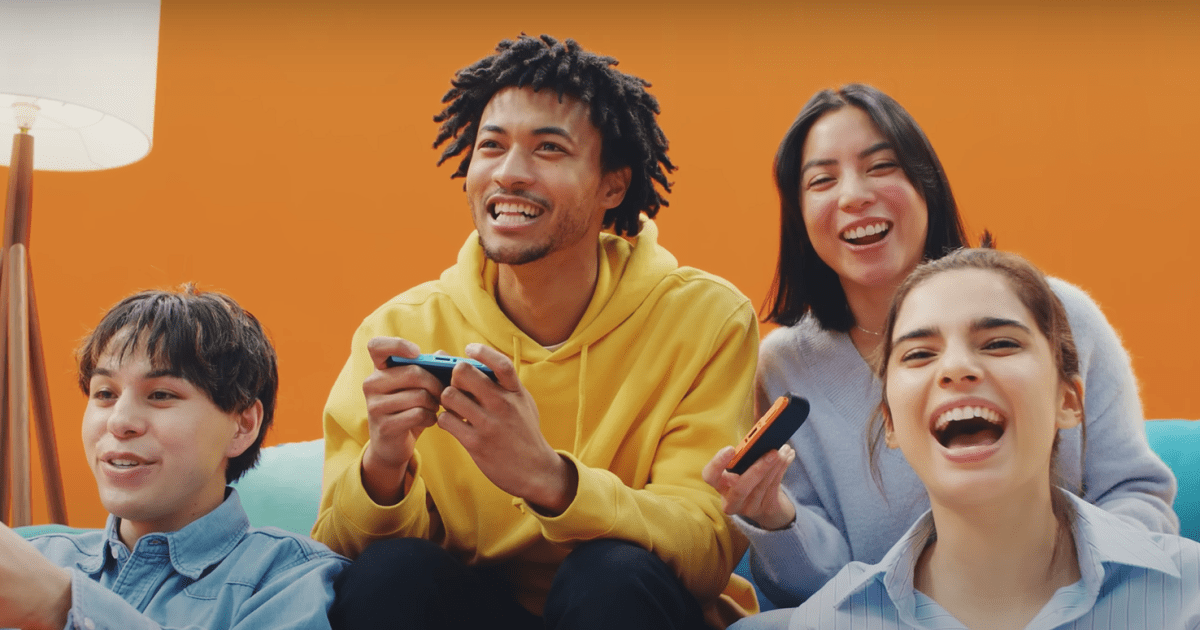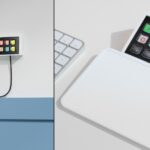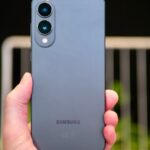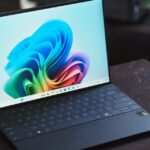“Our number one value is putting smiles on people’s faces.”
That’s what Bill Trinen tells me just hours after the Nintendo Switch 2 Direct wraps up. True to the company’s own ethos, Nintendo of America’s Vice President of Player and Product Experience is as cheery as can be as we chat about the Nintendo Switch 2. He has good reason to be happy. He’s currently in New York City at the first ever hands-on event for a console that’s been in the works since 2019, surviving the trauma of a pandemic and multiple waves of political turmoil.
The reward at the end of that journey is an event space full of joy. Laughter reverberates off the walls as players laugh hysterically over rounds of Super Mario Party Jamboree’s new camera-supported minigames. Jaws need to be cleaned up off the floor each time someone demos Metroid Prime 4: Beyond with mouse controls. It’s the perfect vision of the whimsical world that Nintendo has spent its career trying to craft. Here, among the rows of TVs glowing with vibrant colors, it’s all smiles.
It’s a stark contrast to the world just outside of those doors. As members of the press spent a full day gleefully demoing the Switch 2, news of the console’s pricing strategy was stirring up concern among fans. That was only the appetizer for the real anxiety du jour, as President Donald Trump would cap off an emotional rollercoaster of a day by announcing his plans to implement sweeping tariffs on countries worldwide. Nintendo had set up a pop-up utopia in Manhattan, but just a few miles away, Wall Street became the center of a panic-inducing reality that so many play Nintendo games to escape from.
And yet, Nintendo didn’t flinch. Over the course of Wednesday and Thursday, I conducted interviews with both Trinen and Nate Bihldorff, SVP of Product Development and Publishing at Nintendo of America, and attended a roundtable Q&A with members of the Switch 2’s development team. You wouldn’t know that anything amiss from listening to them. The team stayed on message through it all, selling a comforting vision of the Switch 2 until the moment that reality it’s launching in became inescapable.
Technical magic
Whenever I watch a Nintendo Switch Direct, it’s at home in my apartment. It’s become a clinical viewing for me, as I spend the broadcasts turning exciting reveals into news assignments that will stack up into a pile of edits I need to handle later. It’s a job, and I usually have to rewatch the streams again once the workday ends to really experience them. The Switch 2 Direct was the rare time I’d get to watch one in what would probably be Nintendo’s preferred way in a perfect world: in a room full of viewers vocally reacting to every announcement. It broke sports journalism’s golden “no cheering in the press box” rule, but I got the sense that the scattered “whoas” were almost involuntary. Nintendo was tapping into something primal in the game-loving journalists in attendance.
“The message that we wanted to communicate to people was that everything you loved about Nintendo Switch is coming to Nintendo Switch 2 and we’re building on that and making it an even better platform with even better games,” Trinen tells Digital Trends later in the day when asked what Nintendo’s core message is with its “Switch 2” naming. Judging by the reaction in the room, that message was heard that loud and clear.
It’s easy to see how the reveal got viewers so hyped up. The Switch 2 Direct was an hour of wish-fulfillment, at least on the hardware side. Long-requested features like 4K support were confirmed, while total surprises like a 120fps capable display went one step further. It felt like Nintendo was truly listening to its fans and granting all of their wishes. The reality isn’t quite as magical. When I asked Nate Bihldorff if the changes were spurred by fierce competitors like the Steam Deck, hit portable devices that the Switch inspired, he put down the wand and got technical.
“Instead of looking outward and saying ‘well here’s the other machines on the market, do we need to bring it up to parity?’ it was more a matter of saying, here are the available technologies we have to play with,” Bihldorff tells Digital Trends. “How do we take this clay and turn it into something we want to be not only for our internal developers at Nintendo but also our partners to play with? And I think you can see very clearly that that was a pretty robust combination of the technical side of things. We want to give this thing 256 GB of memory, we want a screen that’s going to deliver 1080p, HDR, and VRR … Even stuff like, we’re going to switch the stand, and cutting down on the material there gives us more room to actually expand the internal components. That really was the impetus which guided them down the path to where we are with the final version.”
That’s the kind of thing that wouldn’t necessarily be possible with the original Nintendo Switch.
Insights like this made the Switch 2 feel like the start of a new era for Nintendo. Computational power hasn’t been a pillar of the company’s marketing strategy for decades. Ever since the Wii era, Nintendo’s focus has been on creating new ways to play — that last word always emphasized. Framerates and resolutions were treated like boring numbers for adults that got in the way of all the fun stuff. That attitude has faded, as we’re now living in a brave new world where Nintendo isn’t afraid to say “Variable Refresh Rate” in between trailers for Mario games.
But where Nintendo differs from, say, Sony, is how it frames exactly what that added power works in service of. When I speak to both Trinen and Bihldorff about what the console is capable of, neither hype up Cyberpunk 2077‘s realism or go on about raytracing. They are squarely focused on talking about how power enables play over visual fidelity.
“The show pony for [power] is absolutely Donkey Kong Bananza,” Bihldorff says. “It’s a combination of a number of different things that are maybe largely invisible, or at least not something that people would focus on if they’re playing, because they’re so focused on ‘I’m smashing everything, I’m having a great time.’ They’re just getting this visceral experience, and yet, you are deforming the environment completely in real time. This is an environment that you can climb on, this is an environment that you can pull a chunk off and beat somebody with it, or jump on and ride around … All of that is taking computational power. And at the same time, you’re having a zillion particle effects because everything is blowing up depending on how quickly you’re smashing everything all around you. You can’t just look at a screenshot and say, well clearly that took a ton of power to render.”
“I jokingly refer to it as the most groundbreaking video game,” Trinen says, delivered with the pride of a dad pulling off a good pun on his kids. “But that’s the kind of thing that wouldn’t necessarily be possible with the original Nintendo Switch.”
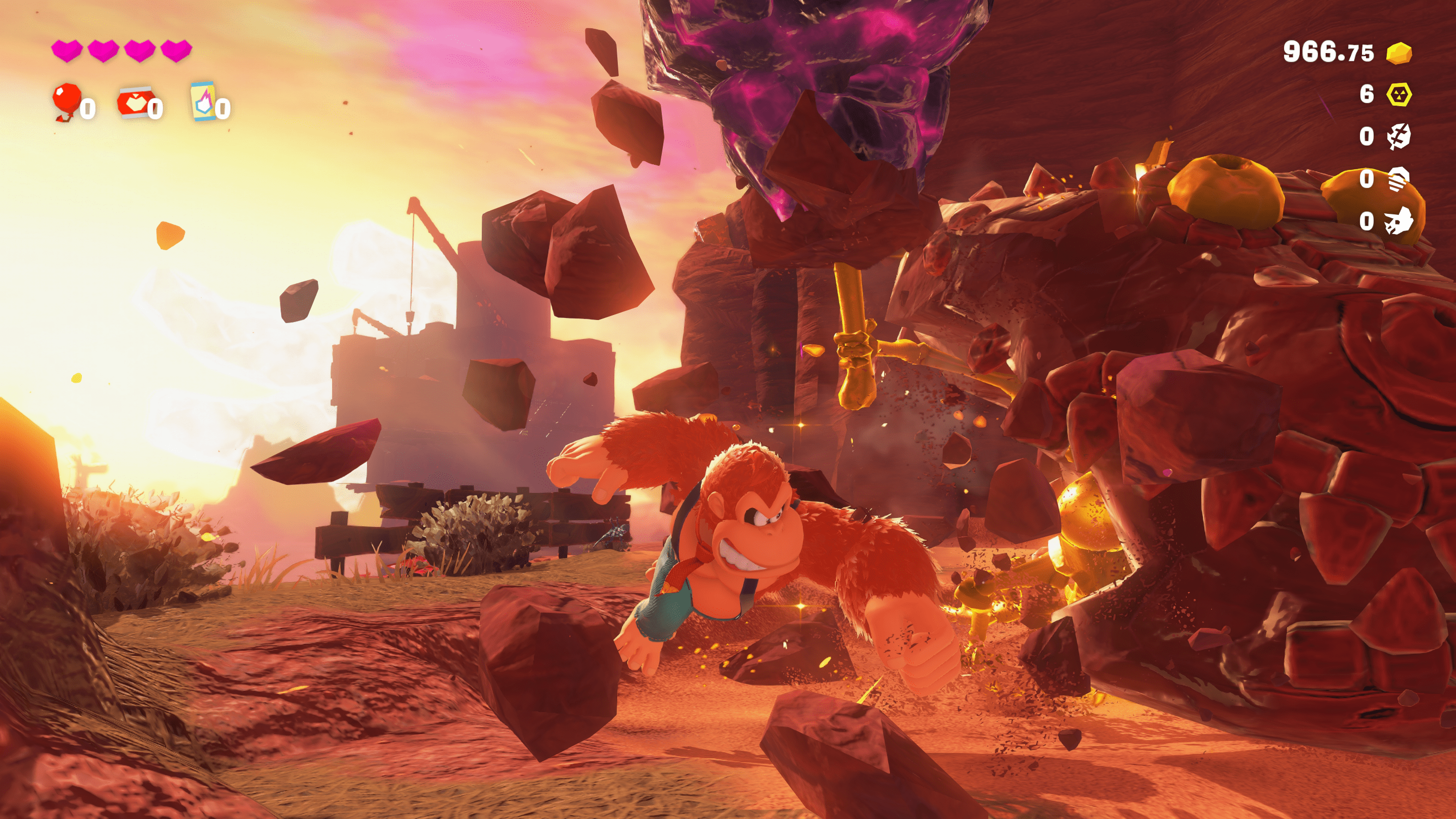
That’s where I finally begin to understand why Nintendo has been so slow to keep up with its competitors on a specs level. A system’s guts are as much of a design tool as the Wiimote or the DS’ touch screen. It is meaningless if all it’s doing is smoothing out jagged textures. How can more power translate to more fun? In Mario Kart World‘s case, Bihldorff says that it’s about turning disparate tracks into an interconnected world full of joyful secrets. It’s a philosophy that begins to unravel how Nintendo is so effective at turning something as mechanical as a tablet into a portal to an amusement park that’s always opening new rides. The less we see the humans underneath the mascot costumes, the easier it is to escape into the illusion.
The smile factory
What’s impressive about Nintendo is its ability to convince fans that even its most routine ideas are part of the magic. Case in point: GameChat. After showcasing Mario Kart World, the second segment of the Switch 2 Direct was dedicated to a new on-board voice chat feature that can be accessed with the press of a button. It is, essentially, Zoom on your Switch 2. The Direct showed players chatting over low quality webcams and sharing choppy gameplay footage with one another, one of the few moments of the Direct that resulted in some social media rubbing. It’s hardly an enchanting idea on paper; if anything, it feels like a sterile reminder of an isolated world in lockdown. But when I ask Trinen if the idea was inspired by the way we communicated during Covid, he flips that narrative into something far more heart-warming.
“I wouldn’t say that that was the background,” Trinen says. “I think really it’s more about when it comes to what Nintendo really values, our number one value is putting smiles on people’s faces. For us with an online chat feature, if you can’t see the smiles of the people you’re chatting with, then we’re not really delivering on what to us is the most important thing for Nintendo. I think that that’s what’s driving the combination of video chat and then game sharing on top of that. There isn’t a chat system that’s doing game sharing the way that we are, so being able to bring both a combination of what you’re doing and how you’re feeling is what makes GameChat magical.”
As he explains this to me, I feel that Nintendo spell cast over me. For a moment, I forget about how much of the day I’ve spent making fun of the pitiful screensharing quality shown in the Direct. A smile breaks out across my face as I really start to buy into Trinen’s Nintendofied vision of human connection. That’s how good of salesmen these guys are; they know how to convince you that the boring thing you do at work is special.
What’s similarly impressive is the way that the company can make those details feel like an evolution of your childhood. We saw that so effectively deployed in 2017 when Nintendo first revealed the original Switch. During that live reveal, Nintendo made a case for how the Switch contains the DNA of every Nintendo system that’s come before it. Trinen pulls that same move when talking about GameChat, tugging on the nostalgic heart strings of a reporter who grew up in the 1990s and 2000s.
“The GameChat feature, because it works not just with new games that are exclusive to Nintendo Switch 2, it works with our Nintendo Switch Online games as well. That means you can play NES games or Super NES games,” Trinen says. “Or if you think back to the Game Boy Advance and the game link cables. The games that came alive when you were playing locally, those come alive together with GameChat. And I think that’s the piece that people aren’t necessarily piecing together when it comes to the whole environment of the platform.”
Once again, it works. Memories of trading Pokémon with my pals, barely a foot apart from one another due to the short length of the GBA link cable, come flooding in. The image of clinical Zoom windows has now been replaced by that vision. It reverse engineers my brain and turns GameChat into a feature that I can’t wait to try with the same childhood pals who I used to traded monsters with in my basement, even while states apart. Between these conversations and a day of laughing with so many peers who I consider friends today; I am now fully enveloped in the fantasy of Switch 2.
And then I left the event space.
A dose of reality
As soon as I wrapped my day and stepped back onto the streets of Manhattan, filled with cranky adults who hadn’t spent their day driving karts and shooting space pirates, I checked my phone. I hadn’t seen the public reaction to the console yet, but surely people were feeling the same thing as me. They were not.
I caught up on Bluesky posts full of players lamenting over the system’s $450 price tag and $80 games. As I dug deeper, the smile started to drop from my face. I started thinking about families in the Bronx, just north of me, who would be priced out. I thought about my friends who have been out of work for months and how they’d need to choose between groceries or the entertainment box that makes their day a little brighter. I began to see video games as a burden amid a time of economic uncertainty and wondered if it really was a fair price to put on joy. My mind goes back to Trinen’s value pitch earlier in the day.
“There is so much that Nintendo Switch 2 offers that I don’t think there’s another device that offers everything that it does,” I recall him telling me. “For example, there isn’t another device right now that does mouse controls out of the box. There isn’t another device right now that has GameChat with video chat and game sharing in the way that Nintendo Switch 2 does. And at the same time, just having the connection through Nintendo Switch Online, through the compatible Switch software that runs on Nintendo Switch 2, through the fact that so many people who have this library of games and accessories has an option to bring that forward with them as they then look at the exclusive games coming to Nintendo Switch 2.”
As I accept that truth in that pitch, I find peace with the price tag and the warm vibes resume. Then I arrived back at my apartment, settling into the work desk where my daily routines take place, and once again look at social media. I was greeted — or jump scared, perhaps — by an image of President Donald Trump holding up some sort of poster. It was filled with nonsensical numbers that I couldn’t really make sense of. It took a moment to understand that I was looking at a list of sweeping, and incomprehensibly random, tariffs on countries that hadn’t been in his crosshairs. I looked again and one country hit my eye first: Vietnam. In a millisecond, I remember that it’s the place where Nintendo currently manufacturers its consoles. Now, the Switch 2 would be dealing with a whopping 46% import tax that its price tag was not built around.
There isn’t an Excel sheet up here where you’re checking boxes, and each time you add $5.
The glass cracks and the illusion flickers. I suddenly start to remember all the strange moments throughout the day. First, there was the lack of a price for the console or games on the Direct. Press at the event were never told those details; the news only started to spread around the show floor in whispered tones as people began seeing social media rumors pile up. Then I remembered on odd moment before the hardware roundtable Q&A began, where a representative from Nintendo urged press to avoid “politics” in their questions. Midway through the roundtable, an international reporter was shut down by Bihldorff, who was moderating the talk. He noted that these just weren’t the right people to ask.
The next day, I returned to the event space to conduct my interview with Bihldorff. At that point, the economic reality had become too difficult to ignore. I broached the topic with him, asking how exactly Nintendo is determining game prices. For instance, why does a gigantic Mario Kart game meant to be played for a decade have the same price as a rerelease of a fairly compact Kirby game?
“In general, each game is being considered on its own merits and the experience being delivered to the player and our pricing reflects that,” Bihldorff says. “You already see the spectrum of price that we’re talking about here. We basically have every color of the rainbow as you go up. There isn’t an Excel sheet up here where you’re checking boxes, and each time you add $5. It’s a number of factors that probably can’t be easily quantified for each one. And that’s why you’ll see a fairly different set of prices for different pieces of software.”
I tried to ask a follow-up, but Bihldorff broke out the same line he had used the day before to recuse the hardware developers from commenting: he’s not the guy to talk to about that. Nintendo had constructed a world for me to live in for two days and I had peeked too far behind the curtain. I caught a glimpse of the people in the mascot suits, their cartoon heads off to reveal the anxious humans chain-smoking their way through the news like anyone else. We’re not supposed to see this. It’s too real, too boring, too sad. The Switch 2 is supposed to be our home away from it and Nintendo was determined to keep it that way.
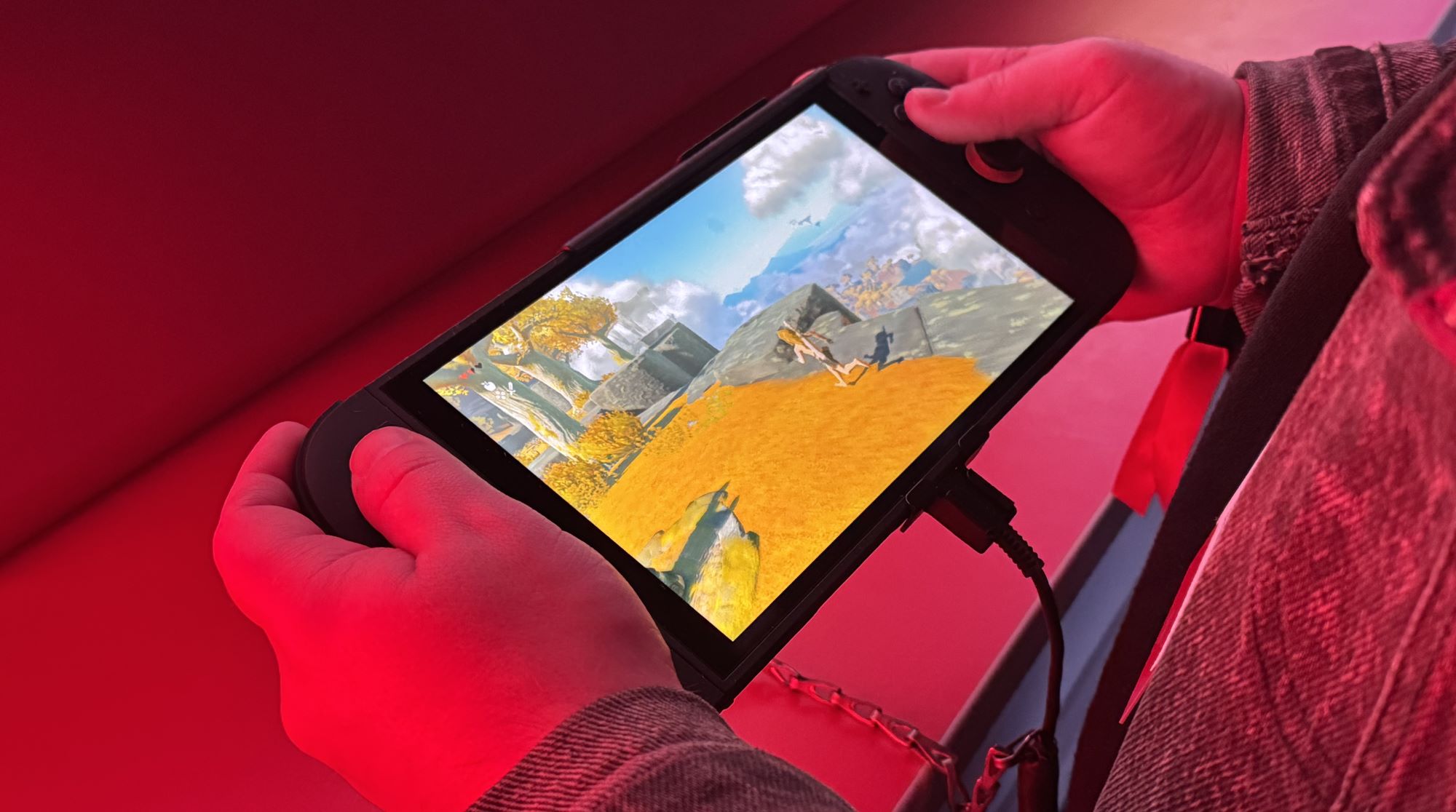
And then, the sobering reality was finally too great to ignore. The next day, a rare statement from Nintendo hit my inbox unprompted. The company told me that preorders for the console has been postponed in the United States due to the impact of President Trump’s tariffs. My internet feeds broke out into a full panic. Anxiety shot up as gamers began bracing for an even pricier console that was now likely to launch during an unforced recession. It was a small thing to stress out over in a vacuum, but it felt like the straw that broke the kart-riding cow’s back. If not even Nintendo can keep a smile on during this moment in history, how are the rest of us expected to?
In a moment of despair, I suddenly wished it was Wednesday again. I so desperately wanted to be back in that event space, sitting in a room full of cheers as Kirby’s pink face popped up on screen. I wanted to relive that moment when I played Mario Kart World for the first time. I wanted to walk through the rows of demo kiosks like a kid on a bountiful Christmas morning, unable to decide which present to unwrap first. For a moment, the Nintendo Switch 2 felt like the only thing protecting my inner child from the sad and stressful world that was once invisible to him. Maybe I had bought the shiny marketing hook line and sinker, but so what? I momentarily empathized with Nintendo’s most committed fans, who are mocked for their willingness to spend any amount of money for a product adorned with Mario’s friendly face.
I just wanted to smile again. Is that so much to ask?
The Nintendo Switch 2 launches on June 5.
Read the full article here





